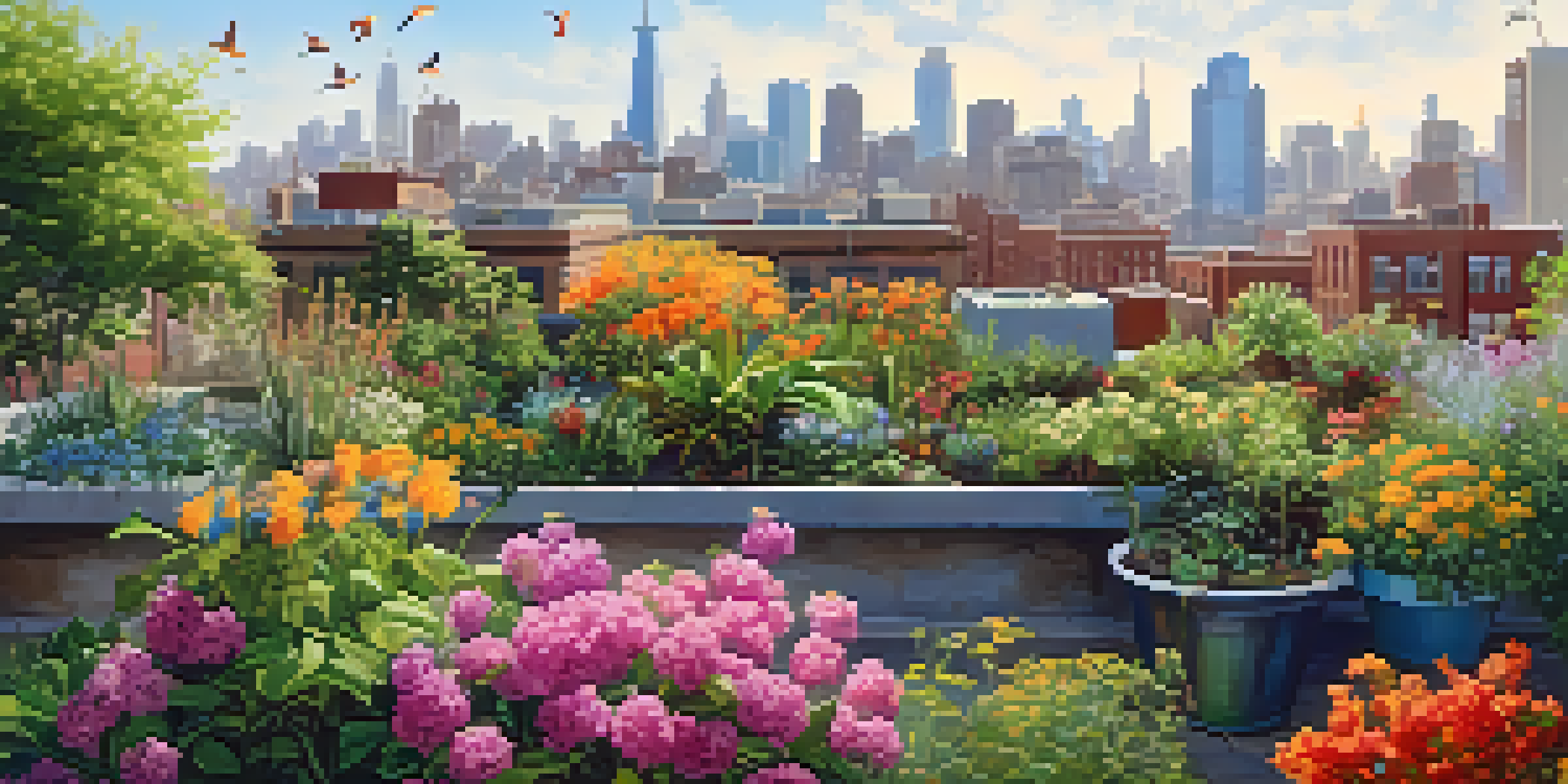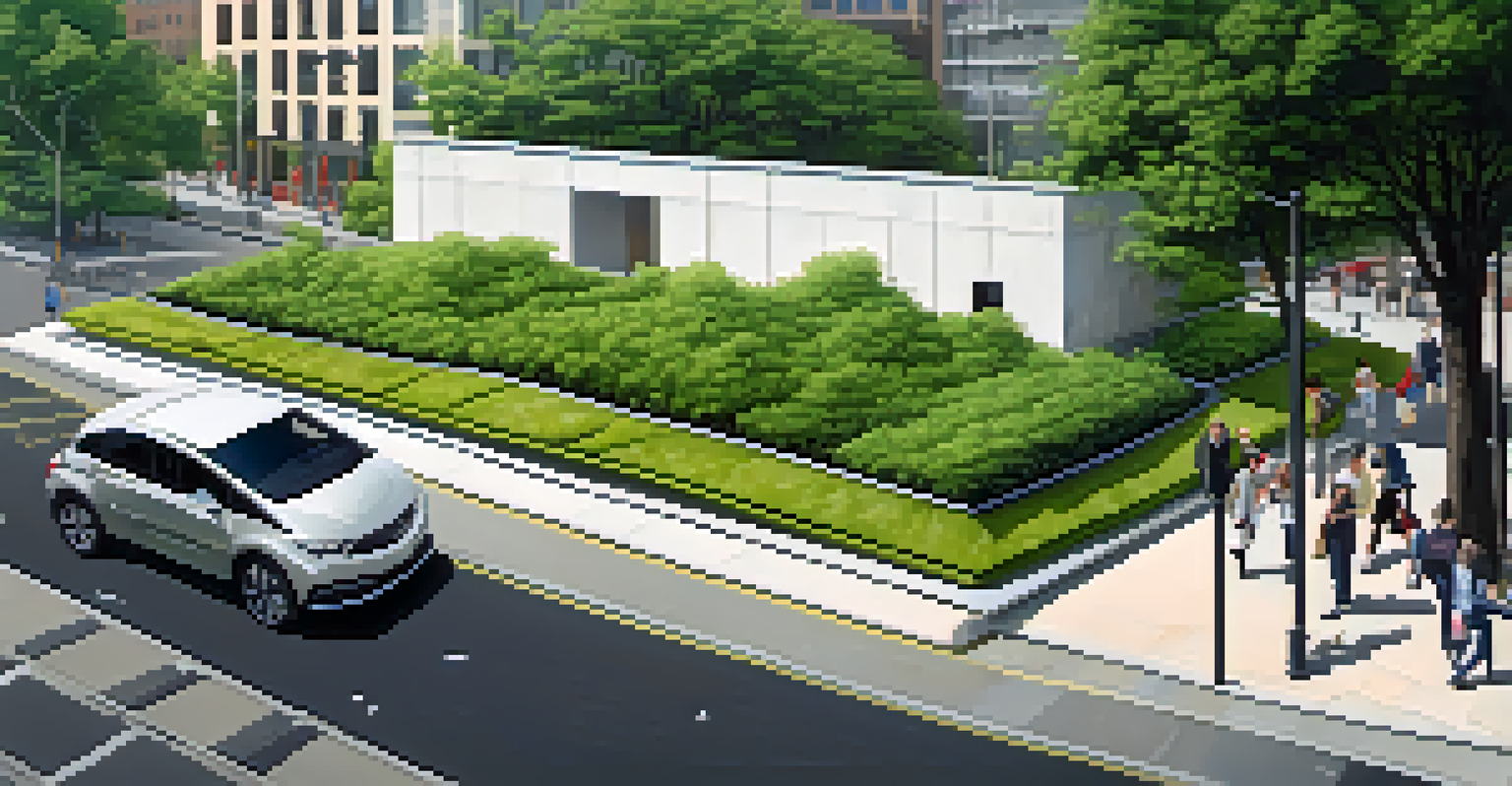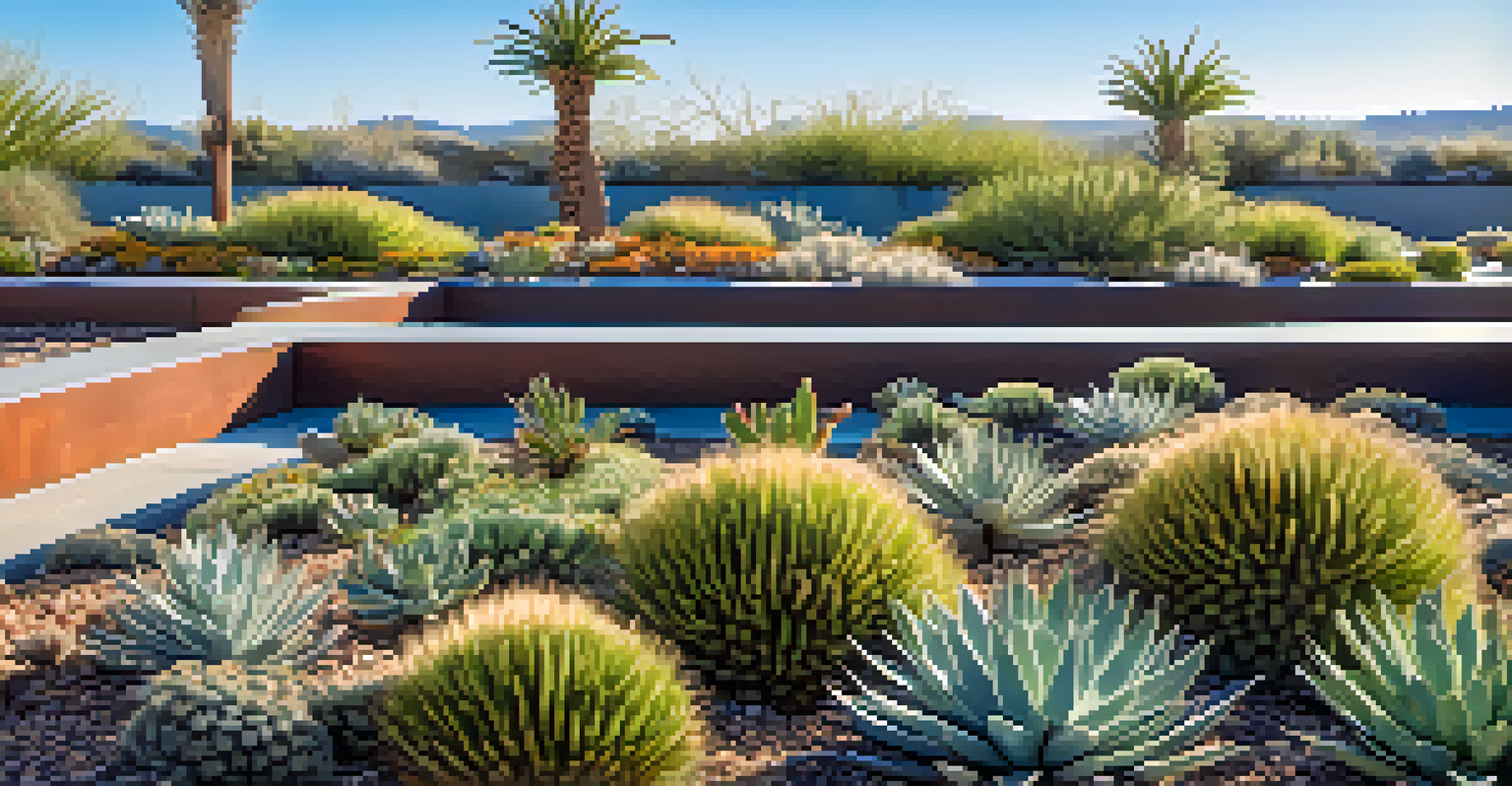The Future of Green Roofs in Urban Development

Understanding Green Roofs and Their Benefits
Green roofs are a unique integration of vegetation and architecture, where plants are cultivated on the rooftops of buildings. They offer numerous environmental benefits, such as reducing urban heat and improving air quality. Imagine a city where buildings are not just concrete structures but thriving ecosystems that support biodiversity.
Green roofs are more than just a trend; they are a vital part of our urban ecosystem.
Beyond aesthetics, green roofs play a practical role in stormwater management by absorbing rainwater and decreasing runoff. This can significantly alleviate pressure on urban drainage systems during heavy rains. Just think of them as sponges, soaking up excess water and releasing it slowly, helping to prevent flooding.
Moreover, they provide insulation, which can lead to energy savings for building owners. With plants acting as natural barriers against heat and cold, a green roof can reduce heating and cooling costs, making it an economically savvy choice for urban development.
The Role of Green Roofs in Urban Heat Mitigation
Urban areas often suffer from the heat island effect, where concrete and asphalt absorb and retain heat, leading to higher temperatures. Green roofs can help counteract this phenomenon by providing a cooler surface and increasing the overall green space in cities. Picture walking through a city where the air is fresher and the temperatures are noticeably lower, thanks to these green oases.

Research indicates that green roofs can lower ambient temperatures by up to 5 degrees Fahrenheit. This cooling effect not only benefits pedestrians but also reduces energy consumption for air conditioning in nearby buildings. It’s like having nature’s air conditioner right on your rooftop!
Green Roofs Benefit the Environment
Green roofs reduce urban heat, manage stormwater, and improve air quality, creating healthier urban ecosystems.
As cities continue to grow, adopting green roofs will be essential in creating livable and sustainable urban environments. They represent a proactive approach to climate change, ensuring that our cities can adapt and thrive even in the face of rising temperatures.
Enhancing Biodiversity with Urban Green Roofs
Green roofs serve as vital habitats for various species, including birds, insects, and even small mammals. By incorporating diverse plant species, these roofs create mini-ecosystems that help support urban wildlife. Think of a green roof as a small nature reserve in the middle of a bustling city, providing food and shelter for creatures that might otherwise struggle to survive.
The greatest threat to our planet is the belief that someone else will save it.
Furthermore, green roofs can contribute to pollinator health by providing crucial resources for bees and butterflies. As urbanization expands, the loss of natural habitats is a significant concern, but green roofs can help bridge that gap. They act as stepping stones, allowing wildlife to navigate through urban landscapes.
The integration of biodiversity into urban design is essential for resilient cities. By fostering these green spaces, we not only enhance the beauty of our surroundings but also contribute to the overall health of our planet.
Economic Advantages of Investing in Green Roofs
While the initial investment in green roofs may be higher than traditional roofing, the long-term economic benefits can be substantial. Reduced energy costs, lower stormwater management fees, and potential tax incentives can make green roofs a financially sound choice for property owners. Imagine recouping your investment not just in energy savings but also through increased property value.
Moreover, green roofs can enhance the aesthetic appeal of buildings, attracting tenants and customers alike. In a competitive real estate market, properties with green roofs stand out, potentially leading to higher rental prices and occupancy rates. They are more than just roofs; they are marketing tools that showcase a commitment to sustainability.
Economic Gains from Green Roofs
Investing in green roofs can lead to long-term savings on energy costs and enhance property value, making them financially attractive.
As cities push for greener initiatives, businesses and developers may find that incorporating green roofs aligns with their corporate social responsibility goals. This alignment can enhance brand reputation, attract eco-conscious consumers, and position businesses as leaders in the green movement.
Innovations in Green Roof Technology
The future of green roofs is being shaped by innovations in technology that enhance their performance and sustainability. Advances in growing mediums, irrigation systems, and plant selection have made it easier to maintain healthy green roofs. For instance, using lightweight, drought-resistant plants can reduce the need for extensive watering and care.
Additionally, smart technology integration can optimize the health of green roofs. Sensors can monitor moisture levels and environmental conditions, ensuring that plants receive the right care without unnecessary resource use. Imagine a green roof that waters itself, adjusting based on real-time weather conditions!
These technological advancements not only improve the functionality of green roofs but also make them more accessible for urban developers. As these innovations continue to evolve, we can expect to see green roofs become a standard feature in future urban planning.
Policy and Regulation Supporting Green Roof Adoption
Government policies play a crucial role in encouraging the adoption of green roofs in urban areas. Many cities offer incentives such as grants, tax breaks, or zoning allowances to promote the installation of green roofs. These measures can turn what once seemed like a niche idea into a mainstream practice in urban development.
As more cities recognize the benefits of green roofs, regulations are evolving to require their inclusion in new developments. This shift not only promotes sustainability but also encourages collaboration between developers, architects, and environmentalists. Picture a future where every new building comes equipped with a lush rooftop garden, contributing to a greener skyline.
Community Engagement is Key
Active community involvement in green roof projects fosters ownership, pride, and educational opportunities, enriching urban life.
Supportive policies can lead to a ripple effect, inspiring communities to embrace green infrastructure. By fostering a culture of sustainability, cities can build resilience against climate change while enhancing the quality of life for their residents.
Community Engagement and Green Roof Initiatives
Community involvement is vital for the success of green roof projects. Engaging local residents in the planning and maintenance of these spaces can foster a sense of ownership and pride. Imagine neighborhoods coming together to nurture their green roofs, creating bonds that strengthen community ties.
Educational programs can also play a significant role in promoting the benefits of green roofs. Workshops and events can teach residents about sustainable practices, encouraging them to participate in green initiatives. This hands-on approach can inspire a new generation of environmentally conscious individuals who value green infrastructure.

Ultimately, when communities are actively involved, green roofs can become vibrant social spaces. They can host events, serve as community gardens, or simply offer a peaceful retreat in the urban landscape, enriching the lives of those who interact with them.